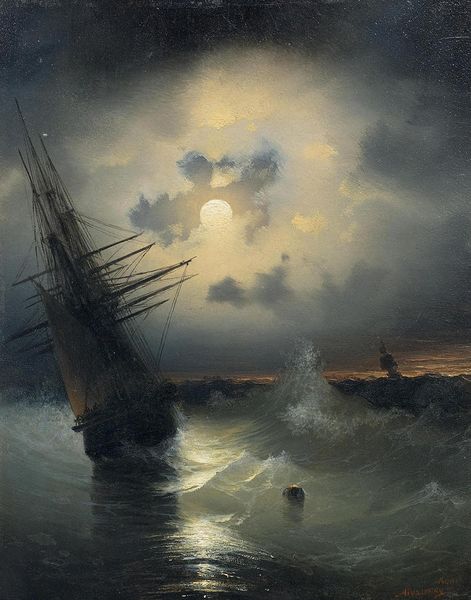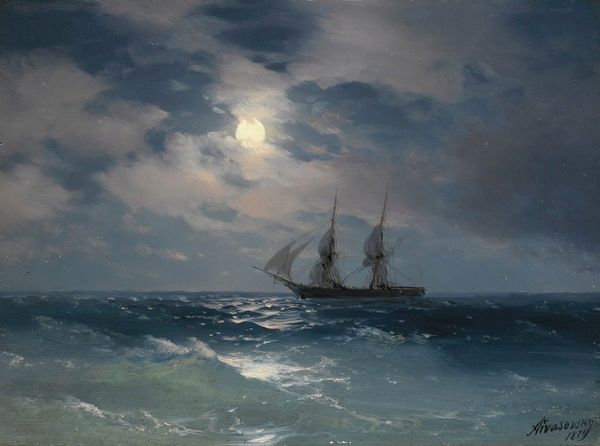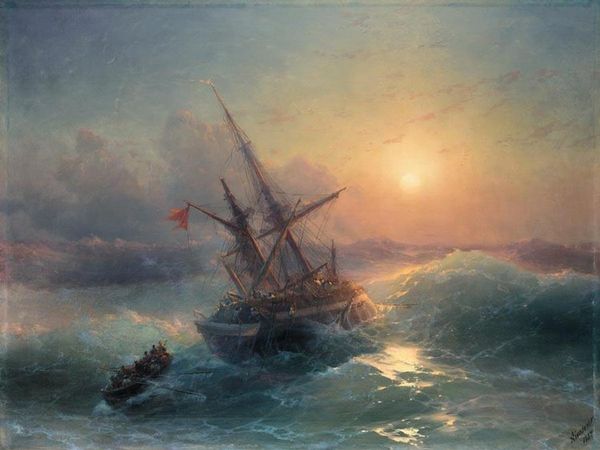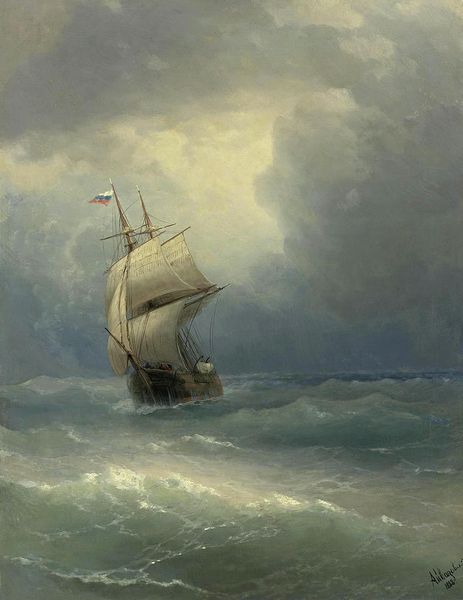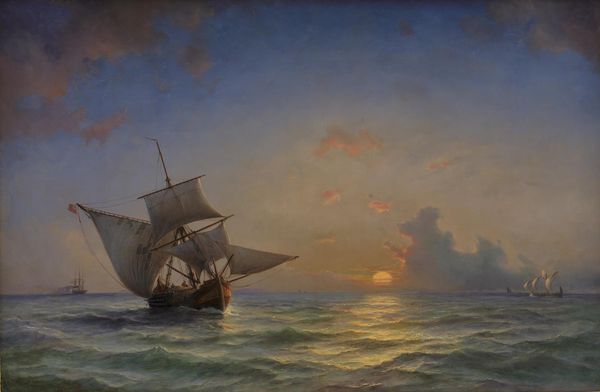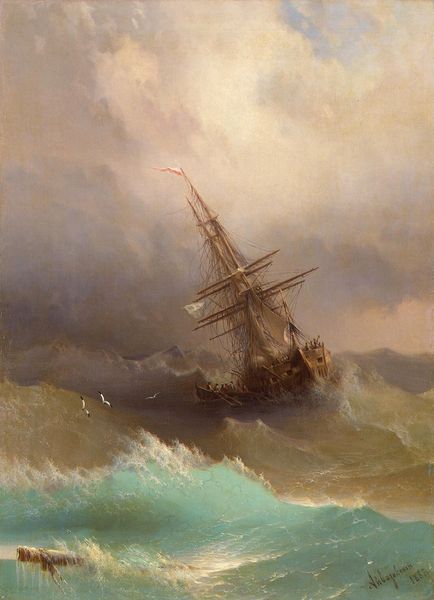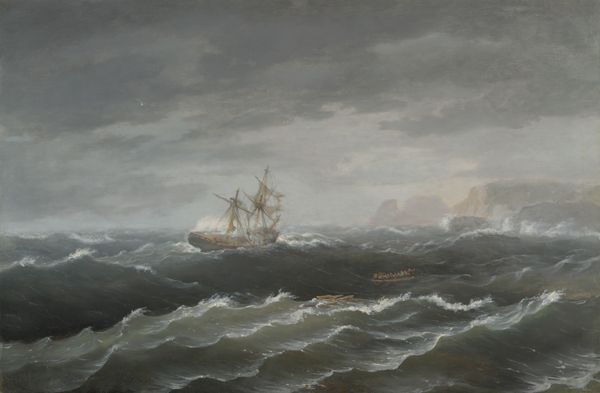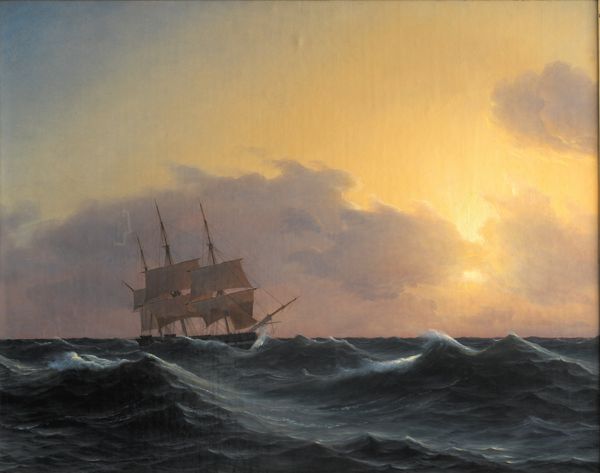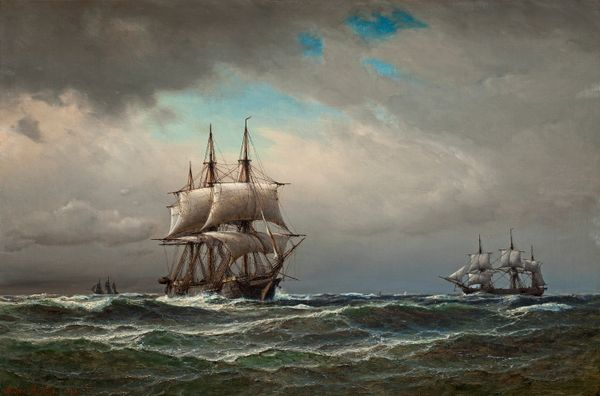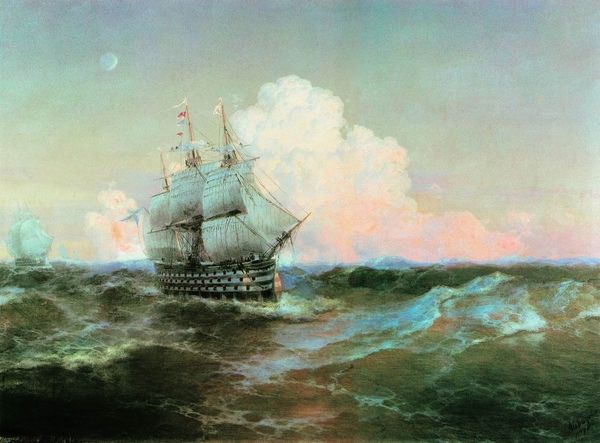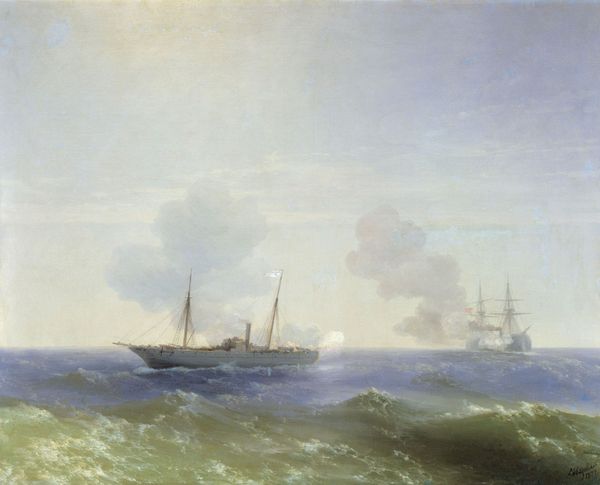
painting, oil-paint
#
painting
#
oil-paint
#
landscape
#
romanticism
#
watercolor
#
realism
Dimensions: 79 cm (height) x 117 cm (width) (Netto)
Curator: What a dramatic scene! The light breaking through those storm clouds creates such a powerful mood. Editor: Indeed, Melbye's 1848 oil painting, “A Danish Corvette in Heavy Seas after a Storm,” captivates with its intense use of light and shadow, a true mark of Romanticism's preoccupation with the sublime. Consider the very materials he chose and the labor involved in its creation, too—pigments painstakingly ground and mixed, the canvas itself stretched taut. Curator: And those materials come together to reflect Denmark’s place in the world during a turbulent time, 1848 being the year of revolutions across Europe. Could the corvette symbolize the Danish state weathering its own storm? I mean, the corvette stands almost as a challenge, even, to the environment and political landscapes of the day. Editor: Possibly, although I lean toward a more literal interpretation. This was a time of expanding maritime trade and colonial ambition. Paintings like these glorified seafaring and the material power ships represented—access to resources, new markets, exploitation of labor. Think about what it took to build and man that corvette: the raw materials, the carpentry, the sail-making. Curator: All very pertinent points! Looking at the painting today through that lens helps unpack how integral Romanticism was to nation-building and displays of wealth. The painting seems almost a visualization of how nation-states employed their resources in these specific ways. Editor: Right! Even the way the waves are rendered, in these thick strokes—it's about the artist's skilled rendering, certainly, but it also showcases the brute force of nature against which the ship's human builders pitted themselves. One might also observe that ships also served for trade and the grim labour of transatlantic slave transport, bringing up the need for historical critique. Curator: Absolutely, so in the Danish context, perhaps also referencing their colonial involvement in the Caribbean and its subsequent reliance on exploited African labor and how Romantic artwork also played a hand. Editor: Precisely. When we unpack the material conditions surrounding the production and use of this vessel, as portrayed through painting, we are compelled to reconsider both artistic achievement and ethical issues intertwined in marine power. Curator: This definitely gives us a more insightful viewpoint! Editor: Agreed, it deepens our understanding and asks the hard questions that the work can make us engage with.
Comments
No comments
Be the first to comment and join the conversation on the ultimate creative platform.

